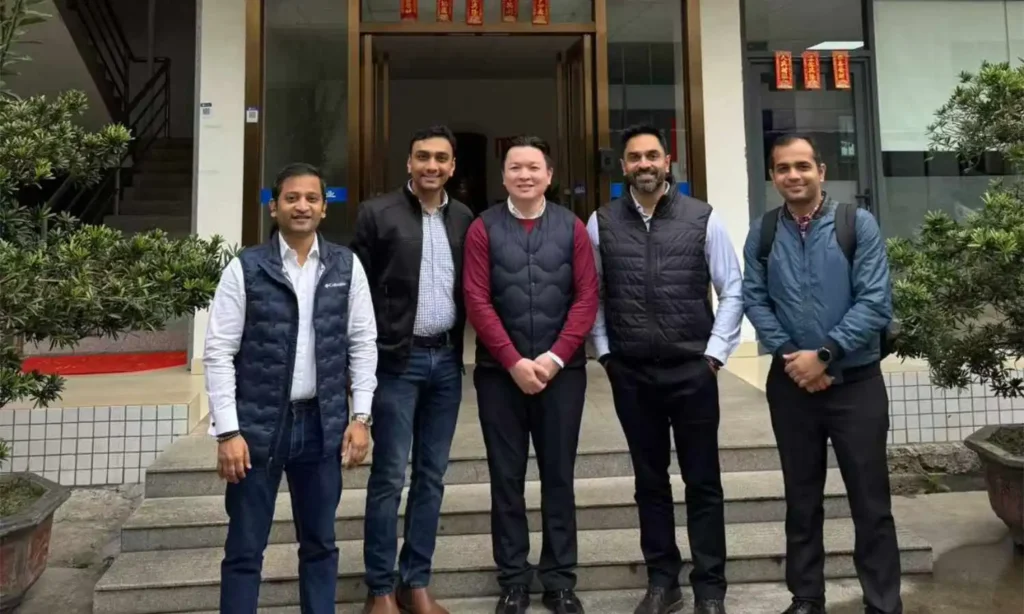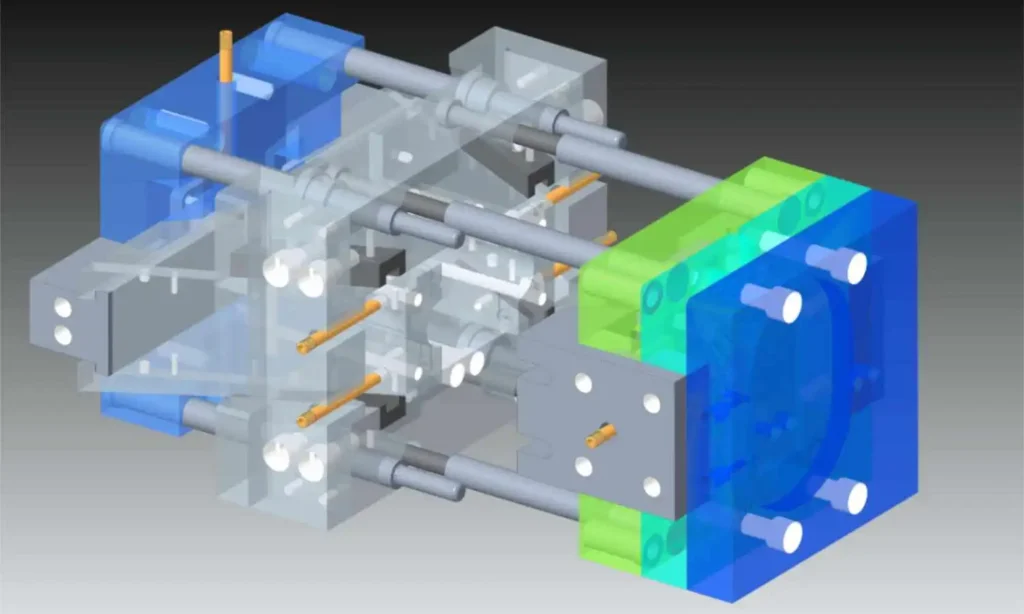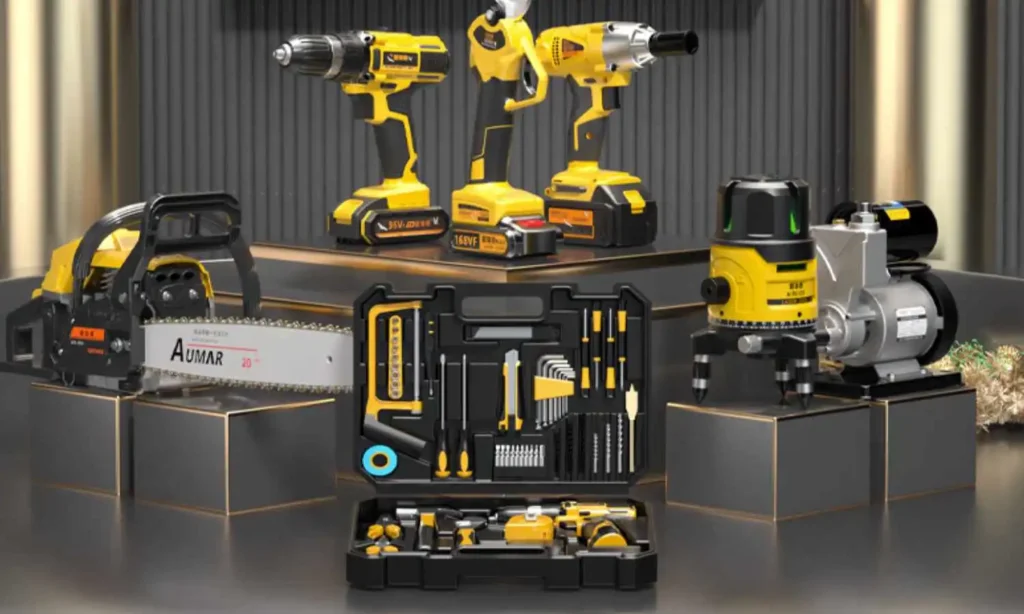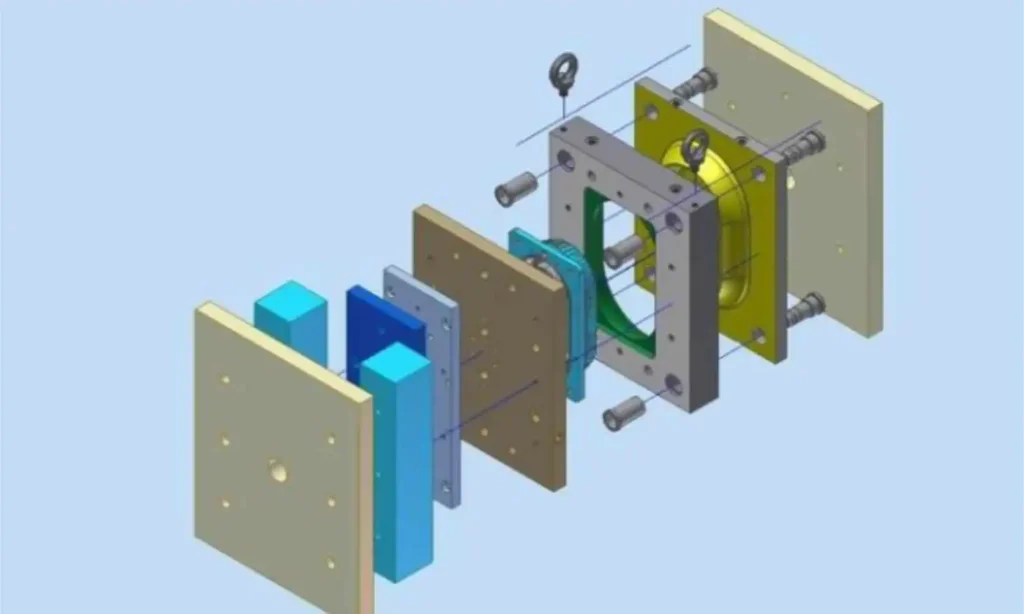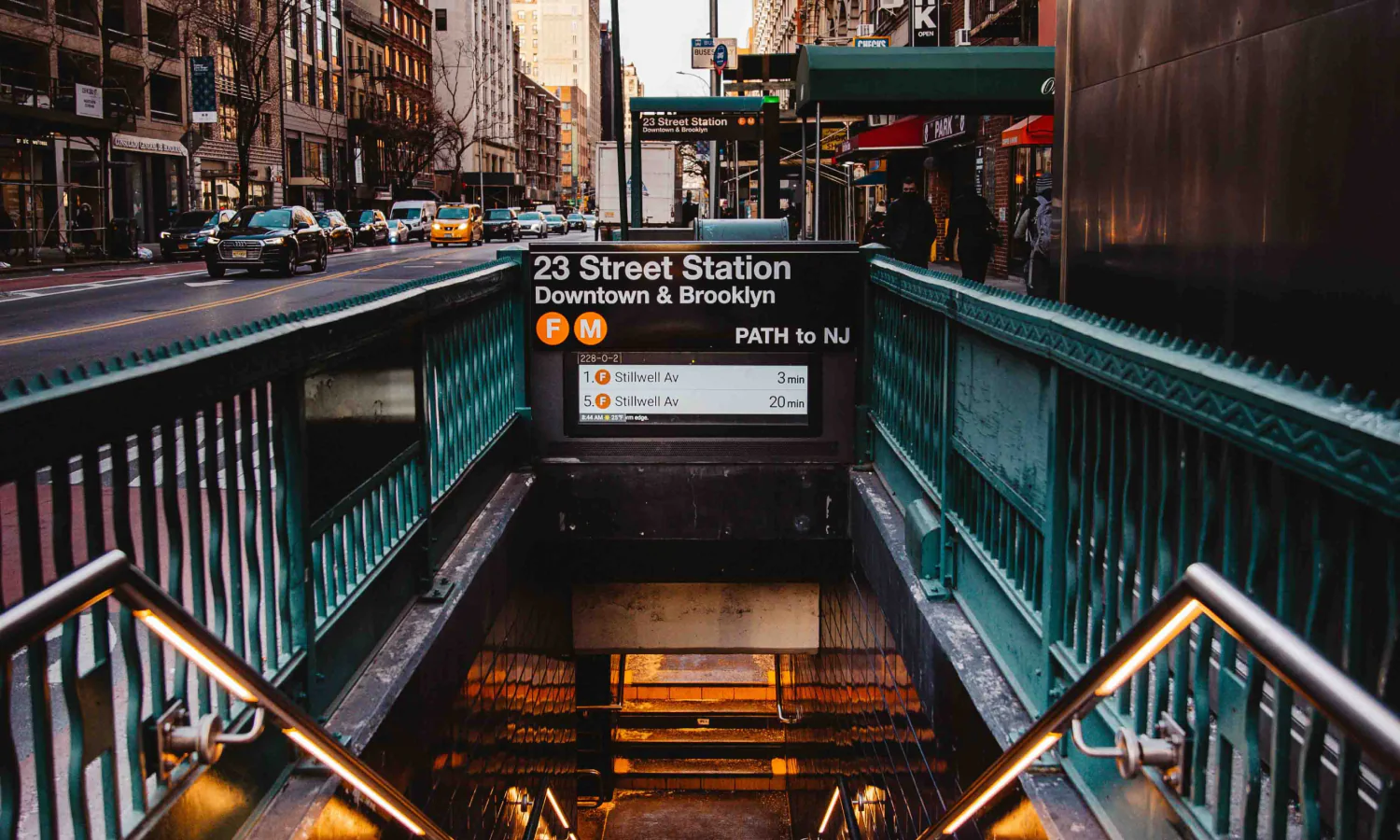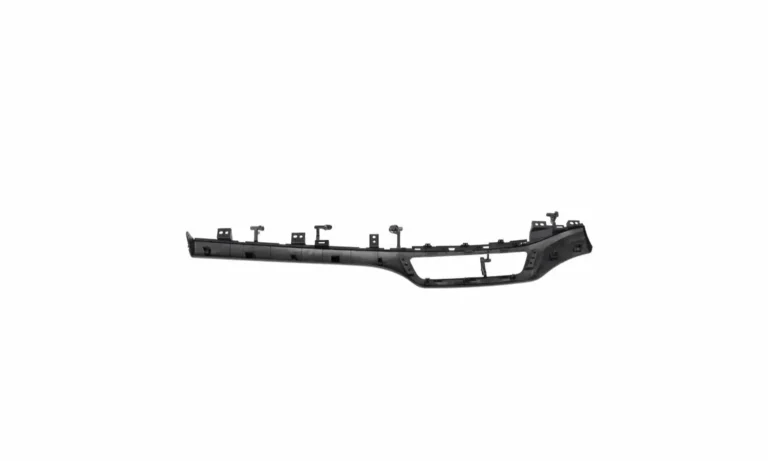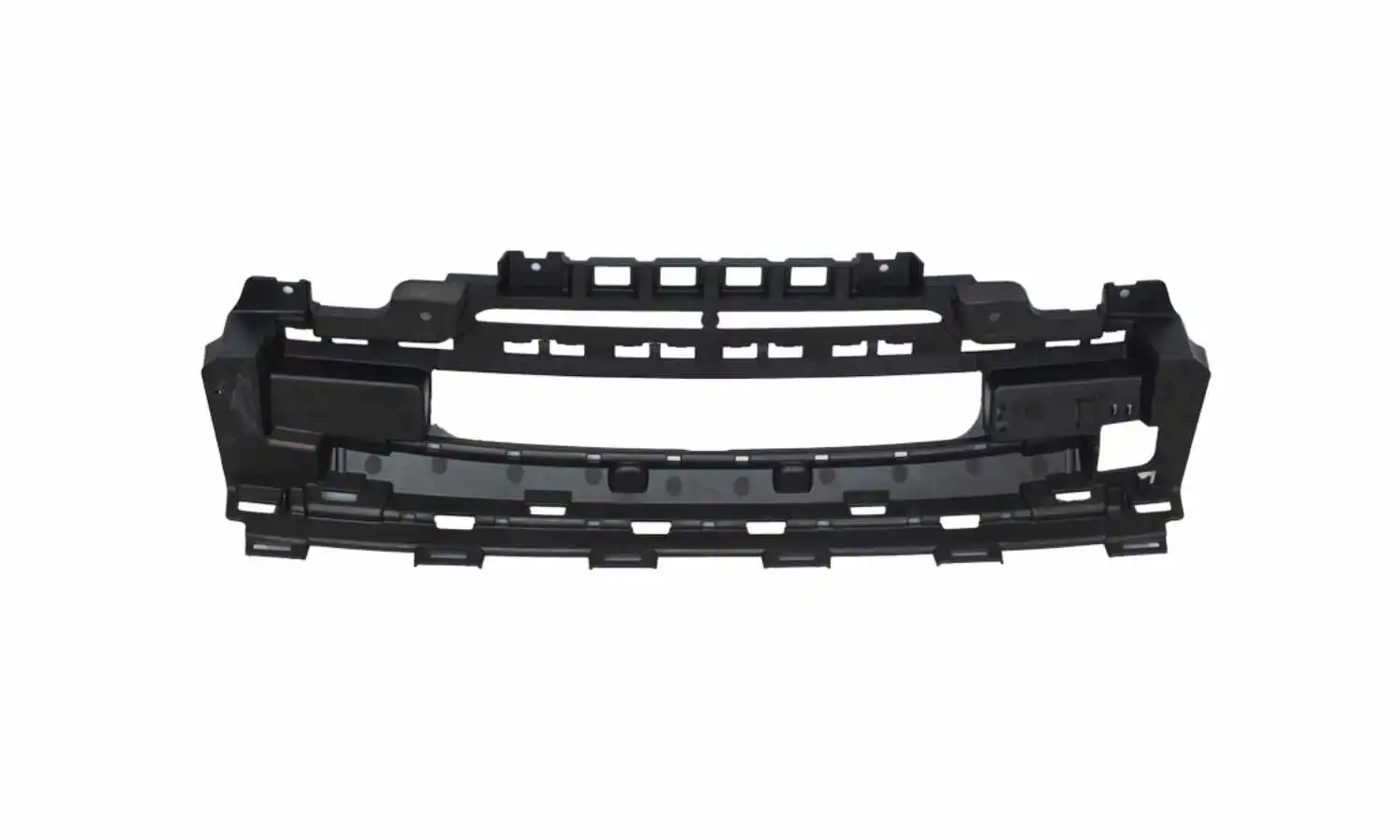
 ByAri
ByAri- On
- InCase Studies
Production Of Automotive Air Outlet Grille Part Through The Injection Molding
- InCase Studies
- Read Time5 mins
| Manufacturing Process | Plastic Injection Molding Service & Plastic Mold Making Service & Foam Injection Molding |
| Parts Material | ABS + PC |
| Mold Type | Rapid Tooling |
| Application Industry | Automotive |
| Surface Treatment | spray paint |
| Tolerance(Accuracy) | Parts: ±0.1mm(±0.004″) Mold: ±0.05mm(±0.002″) |
Notes: We have pre-market confidentiality agreements with all of our customers. All the cases you see have been communicated with our clients. We have mosaiced some sensitive information. All the pictures are taken from JBRplas’s internal shooting, thanks for your support and cooperation~
The design of automotive air outlet grilles involves precision and aesthetic considerations. These components feature thin-walled structures, intricate airflow channels, and delicate angled vanes to direct airflow efficiently. The grille’s surface often includes textured or glossy finishes to align with interior styling, and its geometry must ensure seamless integration with dashboard components. Due to the thin walls and fine details, mold design must account for high dimensional stability and minimal warpage.
Customer Requirements for Automotive Air Outlet Grille Production
The customer prioritizes both functional performance and visual quality for this visible interior component:
- Functional Requirements:
- Precise airflow control through angled vanes.
- Structural integrity to withstand repeated adjustments (e.g., opening/closing mechanisms).
- Aesthetic Requirements:
- Flawless surface finish, free of defects, as the grille is exposed in the vehicle cabin.
- Volume Requirements:
- Medium-volume production using rapid tooling to balance cost and lead time.
Solutions to Manufacturing Challenges of Air Outlet Grilles
Advanced Mold Design
- Sliders and Lifters: For undercuts in vane angles and mounting clips, multi-directional sliders ensure accurate mold release without damaging delicate features.
- Texture Replication: Etched mold surfaces replicate textured or glossy finishes directly during injection, reducing post-processing.
- Cooling Optimization: Conformal cooling channels minimize cycle times and prevent warpage in thin-walled sections.
High-Precision Manufacturing
- Micro-Milling for Fine Details: CNC machining with <0.02 mm tolerance replicates sharp vane edges and airflow channels.
- Mold Surface Polishing: Mirror finishes on critical areas eliminate flow marks and ensure Class-A surface quality.
Material and Process Optimization
- Material Selection: Engineering-grade polymers (e.g., ABS with UV stabilizers or PC/ABS blends) ensure durability and resistance to temperature fluctuations.
- Injection Parameters: Low-pressure injection and precise packing control prevent sink marks in thick-to-thin transition zones.
Functionality Standards
- Airflow Efficiency:
- Grille vanes must maintain ±1° angular accuracy to ensure consistent airflow direction.
- Testing includes airflow simulation and physical validation using anemometers.
- Mechanical Durability:
- Withstand 10,000 cycles of vane adjustment without failure.
- Torsion tests confirm resistance to forces up to 50 N·m.
- Assembly Precision:
- Mounting clips and alignment pins must fit dashboard interfaces with ±0.15 mm tolerance.
Injection Molding Defect Standards
- Surface Quality:
- No visible weld lines, flow marks, or gloss variations on Class-A surfaces. Roughness average (Ra) ≤ 0.8 µm.
- Dimensional Accuracy:
- Critical vane spacing and thickness tolerances held to ±0.1 mm.
- Warpage Control:
- Flatness deviation ≤ 0.3 mm across the entire grille.
- Sink Mark Mitigation:
- Sink depth ≤ 0.3% of nominal wall thickness in transition zones.
Post-Processing and Validation
- Automated Defect Inspection: Vision systems check for surface flaws and dimensional compliance.
- Climate Testing: Grilles undergo thermal cycling (-40°C to 85°C) to validate material stability.
- Aesthetic Approval: Color and texture matched to OEM interior samples under controlled lighting.
Q1. How do you ensure the durability and precise airflow control of the automotive air outlet grille during injection molding?
- Material Selection:
- Use engineering-grade polymers like PC/ABS blends or UV-stabilized ABS for high impact resistance, thermal stability, and UV protection.
- Mold Design:
- Incorporate conformal cooling channels to minimize warpage in thin-walled sections.
- Design multi-directional sliders and lifters to maintain vane angles and undercuts without compromising structural integrity.
- Process Control:
- Optimize injection parameters (low pressure, controlled speed) to prevent material degradation and ensure uniform filling of intricate airflow channels.
- Implement precise cooling time to stabilize dimensional accuracy.
- Conduct airflow simulation tests and mechanical cycling (e.g., 10,000+ adjustments) to validate durability and airflow consistency.
Q2. How do you produce automotive air outlet grilles with intricate geometries like thin vanes and textured surfaces?
- Precision Mold Design:
- Use micro-milled inserts and EDM (Electrical Discharge Machining) to replicate sharp vane edges and fine textures.
- Optimize gate locations using mold flow analysis to prevent weld lines in visible areas.
- High-Precision Machining:
- Employ 5-axis CNC machines for molds with tolerances ≤ ±0.05 mm to ensure accurate replication of complex geometries.
- Process Optimization:
- Adjust injection speed and packing pressure to fill ultra-thin sections (as low as 0.8 mm) without sink marks.
- Use hot runner systems to reduce material waste and improve cycle times.
- Prototyping and Testing:
- Perform multiple trial runs with 3D-printed prototypes to validate airflow performance and texture quality before mass production.
Q3. What factors influence the manufacturing cost of automotive air outlet grilles at First Mold?
- Material Costs:
- Premium polymers (e.g., UV-resistant PC/ABS) increase raw material costs but enhance durability and aesthetics.
- Mold Complexity:
- Multi-slide molds and textured surface etching raise tooling costs due to extended machining and polishing time.
- Production Volume:
- Medium-volume orders balance per-unit costs, while low-volume batches (using rapid tooling) prioritize speed over cost efficiency.
- Post-Processing:
- Secondary processes like texture polishing or UV coating add to overall expenses.
Q4. What materials are typically used for automotive air outlet grilles, and why?
- ABS (Acrylonitrile Butadiene Styrene):
- Advantages: Excellent processability, cost-effectiveness, and surface finish for textured or glossy grilles.
- Application: Standard grilles with moderate thermal and mechanical demands.
- PC/ABS Blends:
- Advantages: Combines PC’s heat resistance (up to 120°C) with ABS’s ease of molding; ideal for grilles near heat sources.
- Application: High-end interiors requiring UV stability and durability.
- PBT (Polybutylene Terephthalate):
- Advantages: Superior dimensional stability and resistance to warpage for grilles with ultra-thin vanes.
- Application: Luxury vehicles with demanding aesthetic and functional standards.
Q5. How do you address warpage and surface defects in thin-walled grille components?
- Warpage Control:
- Design molds with balanced cooling channels to ensure uniform shrinkage.
- Use semi-crystalline materials (e.g., PBT) for reduced thermal expansion.
- Surface Defect Mitigation:
- Polish mold cavities to mirror finishes (Ra ≤ 0.4 µm) to eliminate flow marks.
- Optimize injection speed and pressure to prevent jetting or weld lines in visible areas.
- Post-Molding Stabilization:
- Anneal parts to relieve residual stresses in critical areas like mounting clips.
This FAQ highlights key considerations for producing high-quality automotive air outlet grilles, balancing functionality, aesthetics, and cost-efficiency through advanced injection molding techniques.
Ari
Articles: 25Newsletter
Subscribe to our Newsletter for the latest news, updates and offers.

